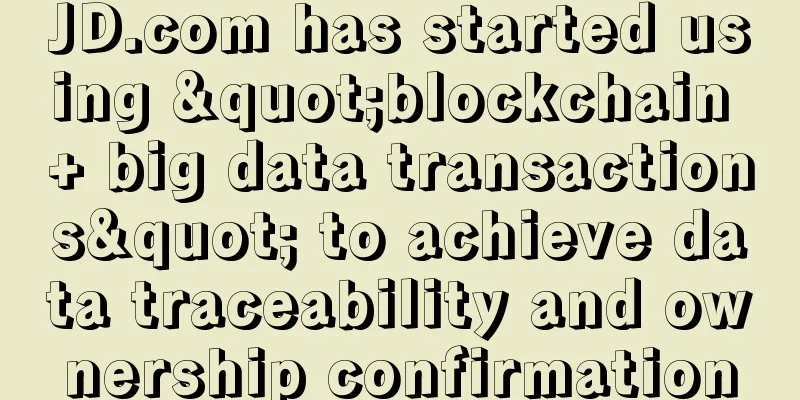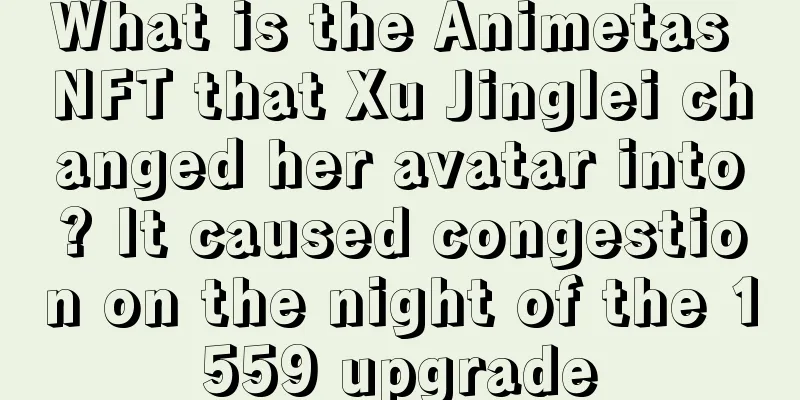Grayscale: Ethereum Repricing

Key points:
Ethereum can be considered one of the most important open source software projects ever, along with Linux, Python, and a few other examples. Despite being less than 10 years old, today the Ethereum network consists of more than 11,000 nodes, processes 35-40 million transactions per month, secures approximately $46 billion in value, and benefits from the support of more than 2,100 full-time developers. The broader Ethereum ecosystem, which consists of interconnected blockchains, currently processes approximately 400 million transactions per month. Despite the Ethereum network’s ETH token’s presence in the crypto industry and the launch of a spot exchange-traded product (ETP) last year, its market capitalization lags far behind that of Bitcoin (BTC). In fact, the ETH/BTC price ratio has fallen back to mid-2020 levels ( Figure 1). In terms of market capitalization, Ethereum’s market value has grown by approximately $90 billion since the end of 2022, while Bitcoin’s market value has increased by approximately $1.35 trillion (or approximately 15 times more). Ethereum’s recent performance has also lagged behind the tokens of some other smart contract platforms, including Solana and Sui. Figure 1: Ethereum has lagged behind Bitcoin for more than two years Continued underperformance has led some observers to question the outlook for Ethereum network activity and the value of ETH. While there is uncertainty about the outlook for every crypto asset, we continue to believe that ETH should be considered an essential component of a diversified cryptocurrency portfolio. Ethereum is not directly comparable to Bitcoin. The Bitcoin network is a monetary system, while the Bitcoin asset is primarily used as a medium of exchange and a store of value. For these reasons, it is part of the Grayscale Currencies Crypto Sector. Bitcoin's relatively strong price returns reflect investor demand for its scarcity and censorship-resistant digital currency properties. In contrast, Ethereum is an application platform , and ETH provides utility to users of those applications. Ethereum, along with Solana, Stacks, Sui, and many other networks, are part of the Grayscale Currencies Crypto Sector. Despite the promise of smart contract technology, we have yet to see mass adoption of decentralized applications based on smart contracts. There are many early success stories — including the growth of stablecoin trading — but current adoption is very low compared to the vision of smart contract platforms, which aim to bring much of traditional finance on-chain. Grayscale Research believes that the adoption of smart contract-based applications will accelerate in the next 1-2 years. Part of the reason is due to regulatory changes and upcoming legislation in the United States. The Trump administration has already made changes to federal crypto policy, which should allow the industry to invest and prosper in the United States. Separately, a bipartisan group of senators has introduced the Guiding and Establishing a National Innovation for Stablecoins in the United States (GENIUS) Act. The bill builds on related efforts in the previous Congress and aims to provide a comprehensive regulatory framework for the issuance of payment stablecoins. Increased regulatory clarity should help increase investment and adoption in blockchain-based applications, thereby increasing on-chain activities (such as transactions and fees) and ultimately accumulating value for smart contract platform tokens. After its initial lead, Ethereum now faces stiff competition from other smart contract platforms, and it needs to execute on its ambitious development plans to succeed. But Ethereum also has differentiating features that we expect to be particularly valuable for financial use cases — including large on-chain capital pools and design choices that emphasize decentralization and neutrality. As a result, we expect Ethereum to capture a large share of future on-chain activity, which in turn will drive value toward ETH. Everything is a computerEthereum is the first major smart contract platform blockchain. Just like Bitcoin, the Ethereum blockchain can be used to send and receive transactions. However, with the addition of smart contracts, Ethereum can also run decentralized applications. These applications can be anything from decentralized lending platforms, to identity solutions, to video games. Since Ethereum acts as infrastructure for applications, it can be thought of as a software-based computer, sometimes referred to as the “world computer.” ... Today, Ethereum hosts thousands of applications and is the largest asset in the crypto space by market cap for smart contract platforms. Ethereum has more on-chain assets (such as stablecoins and tokenized assets) than other leading smart contract blockchains, but has recently lagged behind some other blockchains in terms of on-chain activity (Figure 2). Solana, the second largest network by market cap, has seen higher activity in terms of active addresses, transactions, and fees over the past 30 days, but its market cap is only 30% of Ethereum’s cap. Figure 2: Ethereum is the smart contract platform with the largest market capitalization The investment thesis for smart contract platforms is that new applications will bring more users, more transactions, and ultimately more fees to the underlying protocols. We estimate that transaction volume for smart contract platforms has risen from about 20 transactions per second (TPS) five years ago to about 1,200 transactions today, implying an annualized growth rate of about 130% (Figure 3). In contrast, the Visa network processed about 7,400 TPS in the 12 months ending September 30, 2024. If smart contract blockchains can continue to grow their share of the digital payments space and are able to establish competitive barriers and maintain pricing power, this will lead to increased fee revenue and potentially higher token prices. Figure 3: Smart contract blockchain processes approximately 1,200 transactions per second ETH has performed roughly in line with its peers , as measured by the FTSE/Grayscale Smart Contract Platform Cryptocurrency Industry Index (Figure 4). This market segment currently includes 70 tokens with a total market value of $428 billion. Since the beginning of 2024, the Smart Contract Platform Index has fallen 22%, while the price of ETH has fallen 18%. In contrast, the price of Solana has risen 18% and the price of Bitcoin has risen 90%. Figure 4: Ethereum’s performance is roughly consistent with its peers How to make money with Ethereum Ethereum earns revenue by monetizing network activity through transaction fees, known as “gas fees,” which are the fees required to execute transactions or interact with smart contracts. Unlike Solana and many other blockchains, activity in the Ethereum ecosystem occurs both on the L1 Ethereum mainnet and on the L2 network. This is how Ethereum intends to scale to millions of users, as L1 on its own cannot scale sufficiently without sacrificing decentralization. If working in harmony, this layered structure should provide users with the option of high-throughput and low-cost L2 transactions while retaining the security and decentralization of L1. However, the migration of activity to L2 affects the level of fee distribution across the network, which we explain below. The gas fees for Ethereum’s L1 and L2 networks differ in structure, reflecting their different roles in the protocol’s scaling strategy. The fee model adopted by Ethereum’s L1 has three different components: 1. Gas unit: The fixed computational cost of certain operations (for example, ETH transfer requires 21,000 gas). 2. Base Fee: The payment amount for all transactions is denominated in gwei per unit of gas (1 gwei is equal to one billionth of ETH). The base fee is adjusted algorithmically based on the demand for each unit of gas. 3. Priority Fee (“Tip”): Optional fee used to prioritize the execution of transactions. For example, a transfer of 1 ETH (requiring 21,000 gas) with a base fee of 10 gwei and a tip of 2 gwei would be: =21,000*(10+2)=252,000 gwei or 0.000252 ETH ... Transaction fees accrue value to token holders through a mechanism similar to dividends and buybacks in the stock market. Priority fees are paid to validators as part of staking rewards, similar to dividends. Base fees are burned to reduce the ETH supply, rewarding all token holders, similar to buybacks. (Figure 5) Chart 5: Fees are distributed to token holders via staking rewards and burns L2 networks such as Arbitrum One and Base also charge transaction fees. Because they rely on the Ethereum L1 network for final settlement and security, L2 is able to charge much lower transaction fees and process more transactions per second. However, L2 will remit a portion of the fees to L1 as payment for settlement and security services. Last year, Ethereum underwent a hard fork (network upgrade) called Dencun, which was designed to help expand the L2 ecosystem. The Dencun upgrade introduced blob transactions, a low-cost way for L2 to publish data to L1. The upgrade successfully increased the number of users and transactions on L2 significantly (Chart 6) Figure 6: Significant growth in activity on Ethereum L2 However, the introduction of blob transactions also affects the fee levels and distribution across the network. Most importantly, blob transactions reduce the fees L2 pays L1 (Figure 7). This has led some observers to consider L2 a “parasite” on Ethereum, because in the short term, L2’s success comes at the expense of L1. But if L2 benefits from staying in the Ethereum ecosystem (such as security guarantees and other network effects), then in the long run, the large L2 ecosystem will ultimately bring more value to the Ethereum network and ETH . Figure 7: Ethereum L2 now pays less fees to L1 Future upgrades will continue to expand L1 and L2. The Pectra upgrade, scheduled for April 2025, combines enhancements from Prague (execution layer) and Electra (consensus layer). Specifically for expansion, Ethereum Improvement Proposal-7691 optimizes blob storage, targeting 6 blobs/block, doubling Dencun's blob capacity. Looking ahead, Ethereum's expansion potential may increase significantly with the implementation of the Full Danksharding concept (Figure 8). This upgrade involves expanding the number of blobs per block and the size of each blob, thereby significantly increasing the upper limit of TPS. Figure 8 shows that Pectra and Full Danksharding may affect Ethereum's transaction capacity L2s. Figure 8: Future Ethereum upgrades will significantly increase L2 capacity Ethereum revenue outlookThe outlook for smart contract platform fees is highly uncertain , in part because the technology is in its early stages and we don’t know how much pricing power platforms like Ethereum will be able to maintain over time. Smart contract platforms compete with each other and with centralized systems. To maintain pricing power in the long term, they need to offer differentiated features that prevent users from switching to cheaper (centralized or decentralized) alternatives. Although the Ethereum blockchain is slower and more expensive than many competitors, Grayscale Research believes that its unique advantages, including high-value on-chain assets and an emphasis on decentralization and security, will help with adoption and network effects, and ultimately provide Ethereum with a degree of pricing power over time. Figure 9 shows an example of how Ethereum can increase fees by adding capacity and maintaining pricing power. We assume an average transaction fee of $5.00 on L1, recalling that the average transaction fee was $6.30 in 2019. In the long run, Layer 1 will presumably be used primarily for high-value transactions and transactions that require high security assumptions. For L2, we assume an average transaction fee of $0.05, which is also similar to recent experience. We further assume that Ethereum L1 processes 100 TPS and Ethereum L2 processes a total of 25,000 TPS. These are hypothetical TPS projections that are achievable in the next 3-5 years given Ethereum’s scaling roadmap and assuming significant growth in overall demand for smart contract-based applications. Under these assumptions, Ethereum Layer 1 revenues would grow to over $20 billion , compared to an annualized revenue of approximately $1.7 billion over the past six months (Exhibit 9). While the fee outlook is highly uncertain, if Ethereum executes on its scaling strategy and maintains some pricing power, it should technically be able to significantly increase fee revenues. To monitor progress, investors should consider tracking the fundamental variables in this simplified model—namely, L1 and L2 TPS and L1 and L2 average execution rate fees. Figure 9: Ethereum fee revenue can grow with increased scaling and pricing power Make a bigger cake During the last cryptocurrency bull run, Bitcoin and Ethereum initially appreciated in tandem. Then in 2021, Ethereum's price rose faster, ultimately delivering roughly double the price return of Bitcoin from early 2019 through the market peak in November 2021 (Figure 10). Some cryptocurrency investors may have been prepared for a similar pattern in the current cycle - with Ethereum significantly outperforming Bitcoin as the cycle matures - but have been disappointed by ETH's recent weakness. Figure 10: Ethereum ultimately outperformed Bitcoin in the last cryptocurrency cycle Grayscale Research believes that ETH's poor performance is a healthy sign that the cryptocurrency market is focused on fundamentals. In our analytical framework, the crypto market mainly distinguishes smart contract platforms based on fees. Although the way fees are converted into token value in various blockchains is not exactly the same, they are generally passed on to token holders. Fees can be said to be the most directly comparable measure of blockchain activity. In the smart contract platform crypto space, both Ethereum and Solana have relatively high fees and market capitalization (Exhibit 11). Since the end of 2023, Solana has gained fee revenue and market share in the smart contract platform crypto space, while Ethereum has lost fee revenue and market capitalization. In other words, the market appropriately repriced the relative value of Ethereum and Solana due to changes in fundamentals. In the simple framework shown in Exhibit 11, Solana moved up and to the right and looks roughly fair today (it “grew into its valuation”). In contrast, Ethereum moved down and to the left and is likely valued above its fee revenue today. Figure 11: Ethereum underperforms Solana due to weaker fee growth These subtle differences in competitive position are important, but not as significant as the potential growth of the category as a whole. All smart contract platforms are in early stages of adoption. Ethereum, for example, currently has only about 7 million monthly active users, while Facebook parent Meta Platforms reported 3.35 billion “daily active users” in December 2024. As adoption increases, smart contract platforms are expected to benefit from compounding network effects, with increased participation driving not only increased transaction volume and fee revenue, but also accelerating developer activity, liquidity depth, and interoperability across the ecosystem. This cycle of adoption and utility can expand value capture across the ecosystem. The winning networks will likely be those that earn the most transaction fees over time and whose native tokens have favorable structural supply and demand conditions (e.g., due to limited supply growth and structural demand as a collateral asset or medium of payment). Solana, Sui, and a few other smart contract platforms will differentiate themselves from competitors with high throughput, low transaction costs, and a generally compelling user experience. Ethereum stands out because of its large and diverse ecosystem of applications and developers, its large amount of on-chain capital, and its prioritization of decentralization, security, and neutrality. We expect these features to continue to attract a large number of users to the Ethereum ecosystem, and that Ethereum will account for a significant share of economic activity on smart contract platform blockchains in the future. |
<<: Is there still alt season for cryptocurrency?
Recommend
Explore the origin of chia and unlock the code of wealth
There have been major events in the cryptocurrenc...
SEC consults with external advisors, 72% agree to approve Bitcoin ETF
March 11 is the final decision date for the US Se...
Federal Reserve Board Governor Lael Brainar Advises Regulators to Take Blockchain Seriously
Rage Review : Federal Reserve Board member Lael B...
Several facial features that are very pleasing to mother-in-law
The relationship between mother-in-law and daught...
The supply of Bitcoin held by whales hit a two-month high. Has the market bottomed out?
Glassnode data shows that the supply of Bitcoin h...
Arhat's Physiognomy: What is Arhat's Physiognomy?
What exactly does the Arhat’s facial features loo...
Greek nose physiognomy diagram
Characteristics of the Greek nose <br />The...
Which line of wisdom will affect career luck?
Although the most important thing for a good care...
Explanation of the facial features and personality of women with prominent brow bones. Is it good or bad for women to have prominent brow bones?
Physiognomy includes the five facial features and...
Because of the mining business, AMD has taken a lot of Nvidia's GPU market share
AMD's GPU market share increased by 8% month-...
Saturn Hill in Palmistry
Saturn Hill in Palmistry Saturn Hill in Palmistry...
No matter how many times you fork, Bitcoin will always be the only one
There has been some panic in the Bitcoin communit...
What is the reason for a sunken forehead?
What causes a sunken forehead? People's faces...
Career line diagram has top career line
Career Line Diagram Do you have a top career line...
How can people with beauty peaks improve their love luck?
It is very important to improve your luck in love...









